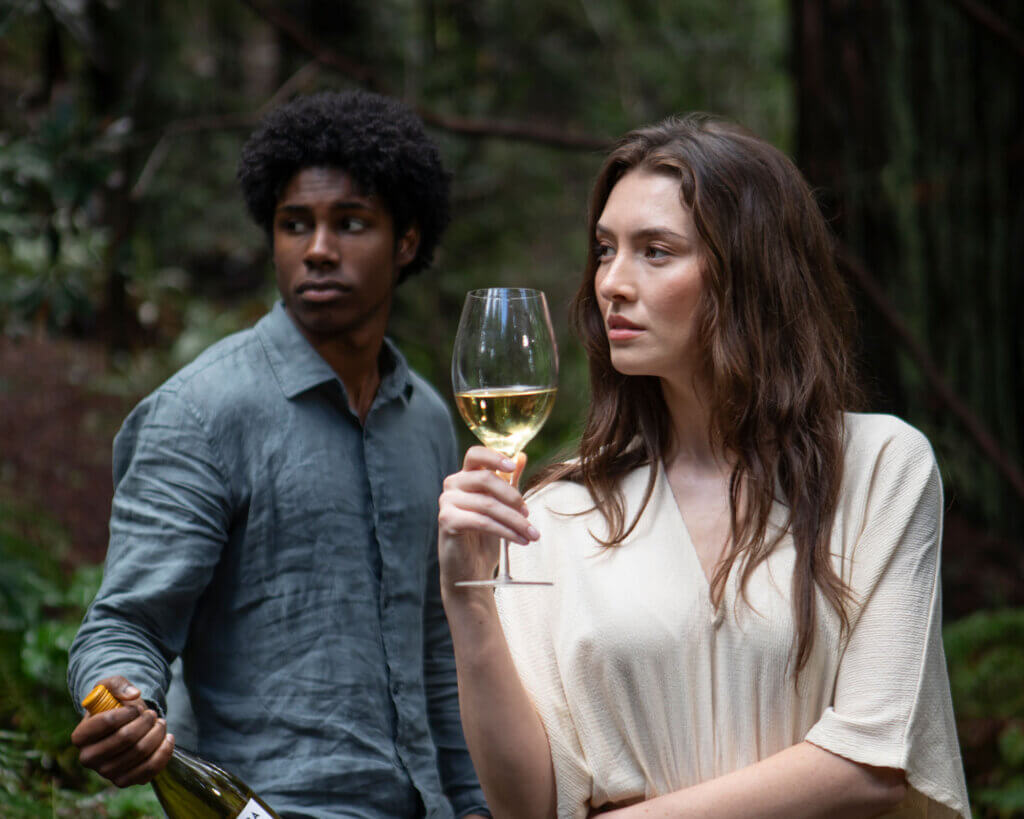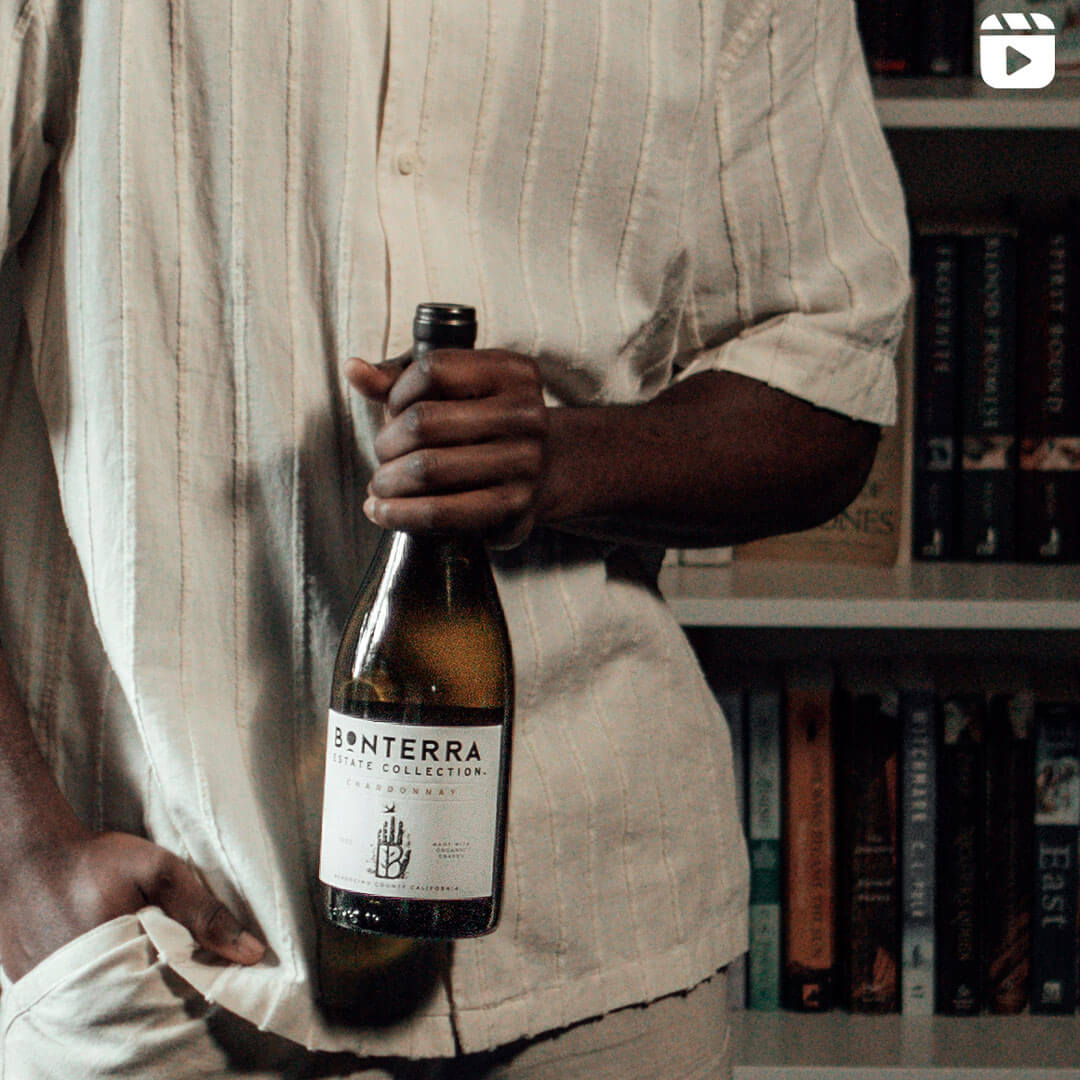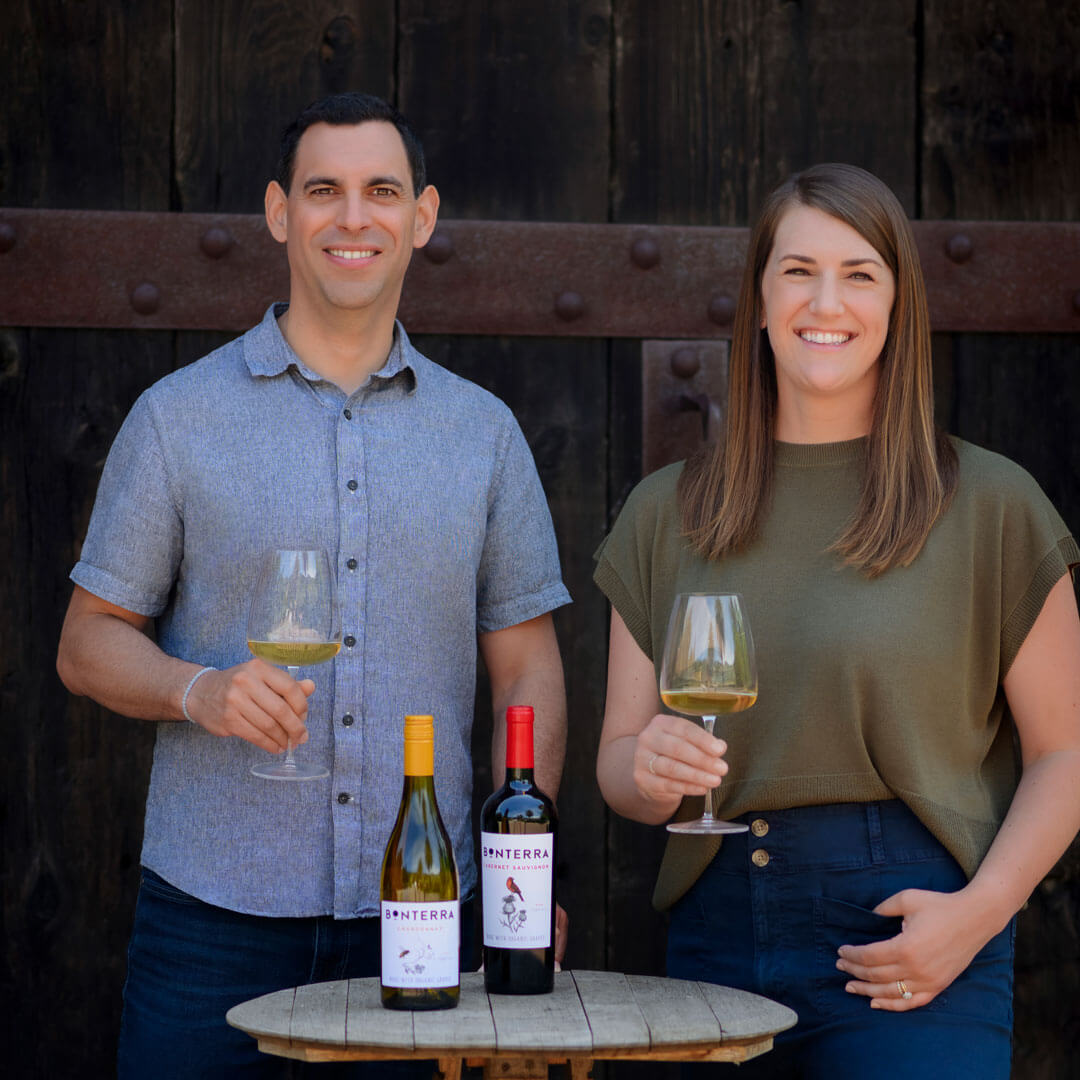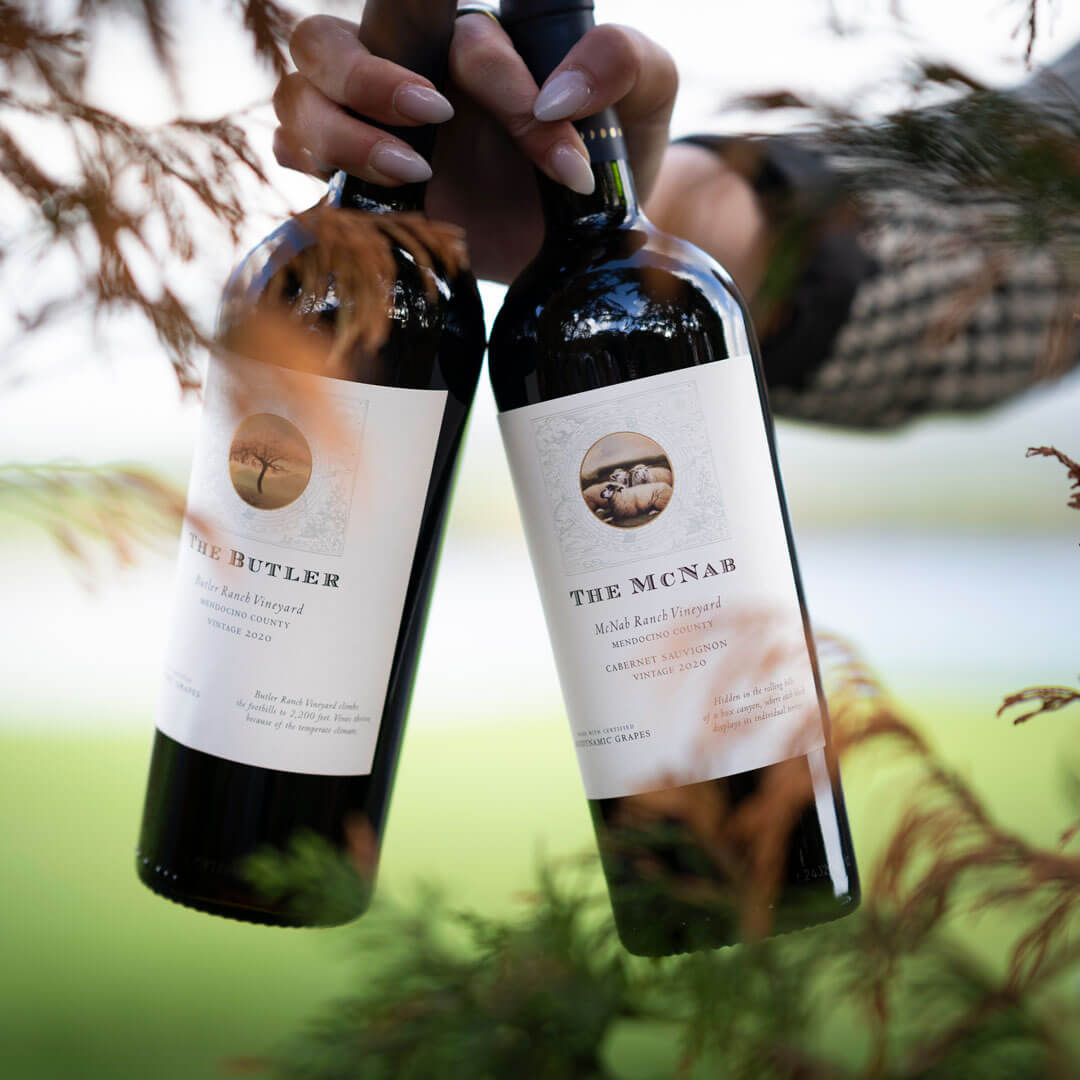The world of wine appreciation begins not with taste, but with scent. While many focus on what touches the tongue, it’s the invisible realm of aromatics that reveals a wine’s most profound stories—tales of soil and sunshine, of thoughtful farming and patient craft. At Bonterra’s organic winery in Mendocino County, this aromatic expression achieves particular clarity. Here, where vines grow naturally without synthetic interventions, grapes are nurtured in harmony with their natural environment, resulting in wines that speak with exceptional purity.
Wine aroma appreciation is both art and science, abetted by know-how and dedicated practice. While professional tasters approach each wine with meticulous attention to temperature, timing, and technique, with a bit of practice and some tips, anyone can master these skills as well.
What follows is an exploration into the sensory journey of wine aromatics—a guide to unlocking the hidden language of scent and deepening your appreciation for the complex interplay between nature, science, and the winemaker’s craft.
Red Wine’s Aromatic Spectrum
Do you know what is a good wine? In red wines, the aromatic journey often begins with fruit. Our Cabernet Sauvignon leads with pronounced black cherry and cassis—characteristics that develop from specific esters during ripening. These notes emerge with particular intensity in organic vineyards, where regenerative farming practices encourage vines to produce higher concentrations of phenolic compounds.
Beyond these initial fruit notes, red wines reveal layers of complexity that speak to both their origin and evolution. In our Cabernet Sauvignon, notes of tobacco and graphite emerge as the wine opens in the glass. These secondary characteristics develop through specific biochemical processes during fermentation and aging, their presence amplified by our organic farming practices that encourage natural phenolic development in the grapes.
Simply put, phenolic development is the natural process wherein plants, especially grapes, create and accumulate complex chemical compounds called phenolics that contribute to color, flavor, and protective characteristics as fruit grows and ripens.
Wine blends are an excellent introduction to understanding how different varieties can create aromatic synergy. The Butler, a single-vineyard red blend, demonstrates how different varieties create aromatic synergy. Here, dark fruit notes mingle with wild herbs and subtle game—a direct expression of our mountainside terroir and organic farming practices. Notes of leather and cedar emerge with bottle age, as slow oxidation allows for the characteristics of the younger wine to soften, creating new aromatic compounds that add sophistication to the wine’s profile.
Bonterra Merlot offers yet another perspective on red wine aromatics, leading with red fruit notes of strawberry and black cherry before revealing subtle hints of cocoa and dried herbs. These characteristics emerge from specific compounds called pyrazines and thiols. Pyrazines, for example, are naturally occurring compounds in grapes that contribute herbaceous and green aromas, such as dried herbs or bell pepper.
Their concentration can be carefully managed through precise harvest timing—harvesting at optimal ripeness reduces overly green notes while retaining subtle herbal complexity. Thiols, on the other hand, are sulfur-containing compounds that develop during fermentation and contribute fruity aromas like strawberry and black cherry.
The Role of Terroir in Wine Aromas
Understanding the concept of terroir is essential to appreciating how a wine’s environment impacts its aromatic profile. Terroir encompasses the natural elements—soil, climate, geography, and altitude—that shape a wine’s character. This section highlights the critical role these environmental factors play in shaping the aromas you experience in your glass.
- Soil Composition: Different soil types (e.g., clay, limestone, volcanic) impart distinct mineral notes to wines. For instance, a wine grown on rocky soil may carry a flinty or mineral quality, which can enhance its complexity.
- Climate and Geography: Cooler climates tend to produce wines with more vibrant, fresh aromas, like citrus or green herbs, while warmer climates may lead to richer, riper fruit notes such as tropical fruits or dried fruits.
- Vineyard Altitude: Higher altitudes can produce wines with brighter, crisper aromas due to cooler temperatures that slow grape ripening and preserve aromatic compounds.
- Organic Farming: At Bonterra, organic and regenerative farming practices enhance the connection between vine and soil, allowing the true terroir to shine through in every bottle.
The Aromatic Expression of White Wines
White wines present their aromatic character with particular clarity, offering an ideal starting point for understanding wine’s hidden language. In our Bonterra Sauvignon Blanc, vibrant citrus notes—lime zest, grapefruit, and subtle orange blossom—emerge from specific compounds called thiols, developed during fermentation from precursors present in the grapes. These precursors accumulate with particular intensity in organic vineyards, where regenerative farming practices encourage vines to develop fuller aromatic potential.
Beyond these citrus notes, our Sauvignon Blanc reveals layers of tropical fruit—kiwi, passion fruit, and subtle gooseberry—characteristics that develop through precise harvest timing and careful temperature control during fermentation. These aromatics express themselves most clearly when served at 45-48°F, when volatile compounds release at optimal rates for your sensory perception.
Our Bonterra Chardonnay demonstrates delicious complexity. Initial aromas of ripe pear and golden apple—products of specific esters formed during fermentation—give way to more nuanced characteristics of white peach and cantaloupe. Careful barrel fermentation introduces vanilla and subtle toast notes, while lees aging develops brioche and hazelnut characteristics. At the wine’s ideal serving temperature of 50-52°F, these elements harmonize beautifully, each contributing to our Chardonnay’s complete aromatic profile.
The Impact of Aging on Wine Aromas
Wine aging plays a transformative role, allowing aromas to evolve from fresh, fruit-forward notes to more complex and mature scents. Understanding how aging influences aromatic expression can deepen your appreciation for older wines and their subtle layers of complexity.
- Primary Aromas: These are the fresh, fruit-driven scents present at the start, such as berries in a young red wine.
- Secondary Aromas: These evolve during fermentation and aging, bringing in characteristics like oak, vanilla, and spices. A wine’s exposure to oxygen and oak barrels can introduce these complex notes.
- Tertiary Aromas: As wine ages, it undergoes chemical changes that bring out tertiary notes such as leather, tobacco, earthy, and forest floor qualities. These aromas are often found in wines that have aged for several years, especially reds like Cabernet Sauvignon.
- Evolution with Time: As a wine breathes and ages, its aromatic profile changes. For example, a young wine’s bold fruit notes will soften and allow more subtle tertiary aromas to emerge, creating a more refined and intricate wine experience.
The Precision of Temperature: Unlocking Wine’s Aromatic Potential
In the realm of wine appreciation, temperature emerges as a critical factor, orchestrating a complex interplay of aromatic compounds that engage our senses. This precision in serving temperature is far more than mere ritual; it is a key that unlocks the full potential of a wine’s aromatic expression.
Consider the delicate aromatics of a Sauvignon Blanc, served at a crisp 45-48°F. At this temperature, the wine’s volatile compounds—those responsible for its characteristic citrus and tropical notes—are released with measured restraint. The cooler temperature slows the molecular movement, allowing the wine to reveal its aromatic profile gradually, like a landscape emerging from morning mist. This controlled release prevents sensory overwhelm, enabling the taster to discern each nuanced note with clarity.
As we move to Chardonnay at 50-52°F, we enter a realm of pleasing aromatic complexity. This slightly warmer temperature coaxes forth the wine’s more subtle characteristics—perhaps hints of stone fruit or delicate oak-derived nuances. The molecular vibrations increase just enough to liberate these compounds, creating a harmonious balance between freshness and depth.
For red wines, such as Cabernet Sauvignon at 60-65°F, a warmer serving temperature is nothing short of transformative. At this range, the wine’s structure softens, allowing its aromatic compounds to volatilize more readily. The result is a rich tapestry of scents—dark fruits, spices, perhaps a whisper of leather or tobacco—each note distinct yet part of a cohesive whole.
The science behind this aromatic alchemy is both precise and poetic. As temperature rises, it increases the kinetic energy of aromatic molecules, causing them to evaporate more rapidly and reach our olfactory receptors—specialized proteins in and around our noses that identify aromas—with greater intensity.
Yet, this process is delicately balanced. Too cold, and the aromatics remain locked within the liquid, muting the wine’s expression. Too warm, and the volatile compounds escape too quickly, leading to a fleeting and potentially overwhelming sensory experience.
In essence, the careful calibration of serving temperature is akin to focusing a lens. It allows the Bonterra wine to express its unique character, each aromatic component perfectly articulated and timed. This attention to thermal detail transforms the act of wine tasting from mere consumption to a journey of sensory discovery, where each sip reveals new depths and dimensions of the winemaker’s craft.
For the discerning oenophile (and for gamely curious wine fans), mastering this interplay of temperature and aroma is not just about enhancing pleasure—it’s about honoring the artistry and science encapsulated in each bottle. It’s a reminder that in the world of fine wine, every detail matters, and the path to true appreciation is paved with knowledge, patience, and a willingness to engage all of one’s senses in the pursuit of an incredible experience.
The Art of Personal Wine Assessment
The ritual of wine assessment begins before the first swirl. A suitable tasting environment provides more than ambiance—it creates optimal conditions for aromatic perception. Choose a space free from competing scents, as aromatic compounds from perfume, food, or even fresh flowers can bind to the same olfactory receptors that process wine aromatics. Proper lighting matters too, not merely for visual assessment of the wine in the glass, but because our brain integrates visual cues with aromatic perception.
Approach each wine with multiple short sniffs rather than one long inhalation. This technique works with our olfactory system’s natural function, preventing sensory fatigue while allowing recognition of different aromatic compounds as they emerge. The first approach often reveals primary fruit characteristics, while subsequent visits to the glass uncover deeper complexities.
Your choice of glassware plays a crucial role in aromatic perception. A proper wine glass isn’t about ceremony—its shape creates an area of concentrated aromatic compounds at the rim where your nose meets the glass. This design allows you to detect subtle characteristics that might otherwise dissipate too quickly. Clean glassware is essential, as any residual soap or storage odors can interfere with wine aromatics.
Building Your Tasting Expertise
Begin your aromatic exploration with wines known for their clear varietal expression. Our Sauvignon Blanc offers an ideal starting point, its pronounced citrus and tropical notes providing clear reference points for aromatic recognition. These characteristics share molecular compounds with familiar fruits and herbs, helping establish connections between what you smell and how you describe it.
Progress next to Chardonnay, where you’ll discover how winemaking choices add layers of complexity to primary fruit notes. Pay attention to how the wine’s aromatics evolve as it warms slightly in the glass—initial fresh fruit notes give way to subtle oak-derived characteristics, demonstrating how temperature affects aromatic expression.
When moving to red wines, start with Pinot Noir. Its lighter body and bright fruit characteristics create a natural bridge from white wines while introducing the structural elements—like soft tannins—that influence aromatic perception in bigger reds. This understanding prepares you for more structured wines like our Cabernet Sauvignon, where multiple layers of aromatics work in concert.
Keep a detailed tasting journal not merely to record impressions, but to develop the connection between what you smell and how you describe it. Compare similar wines side by side, noting how subtle differences in winemaking or origin influence aromatic expression. Professional tasting kits can help by providing pure reference standards for common wine aromatics, though familiar fruits and herbs from your kitchen can prove equally valuable.
Sensory Exercise: Training Your Nose
To truly master the art of wine tasting, training your sense of smell is key. The more you familiarize yourself with various wine aromas, the better equipped you’ll be to identify them in wine. This exercise introduces simple steps you can take to sharpen your olfactory skills and enhance your ability to detect subtle notes in wine.
- Familiarize with Common Aromas: Start by smelling ingredients from your kitchen—herbs, fruits, spices—and associate them with the aromas you encounter in wine. For example:
- Strawberry in a Merlot
- Lemon zest in a Sauvignon Blanc
- Create a Tasting Journal: Record each wine’s aroma profile, paying attention to primary (fruity), secondary (oak, spice), and tertiary (earthy, leather) notes. Over time, this will help you refine your ability to recognize and describe complex aromas.
- Use Professional Kits: If available, sensory kits with standard aromatic compounds can help you become familiar with key wine aromas. But for beginners, smelling common kitchen ingredients can provide a practical foundation.
- Practice with Different Wines: Smell the same wine at different temperatures or after it has breathed for a while. Notice how its aromas evolve.
Advancing Your Understanding
As your expertise grows, pay attention to how wines evolve in the glass. Temperature changes, exposure to oxygen, and even the shape of different glasses influence aromatic expression. Notice how our Estate Cabernet Sauvignon, for instance, reveals different characteristics as it breathes—initial dark fruit notes giving way to more complex tertiary aromas over time.
To advance your understanding further, try revisiting a single glass of wine over an hour or two. Observe how its character evolves as it warms slightly or as oxygen continues to interact with it. Keep a journal to document your impressions—what begins as dark fruit may transition into dried fig or cocoa; what starts as fresh herbs may deepen into savory spice or forest floor.
The Journey of Aromatic Discovery
Understanding wine aromas opens a gateway to a deeper appreciation of this complex beverage, transforming each glass into an exploration of nature’s intricacies. At Bonterra, our commitment to organic and regenerative farming enhances this journey, resulting in wines that express their character with remarkable clarity.
As you embark on your aromatic adventure, we encourage you to keep notes on your discoveries, forging connections between what you smell and how you interpret those scents.
Share your experiences with friends, comparing impressions to build a shared vocabulary for describing the nuances of wine. We invite you to delve into these principles through our diverse portfolio or by joining our wine club, where each bottle offers new opportunities for exploration and understanding—an invitation to savor the rich tapestry of aromas that define Bonterra wine.




